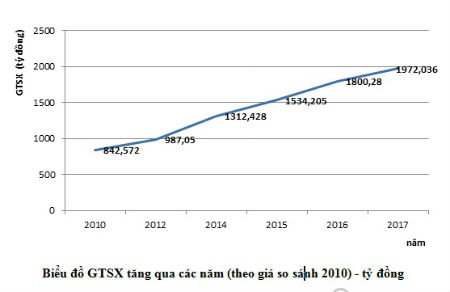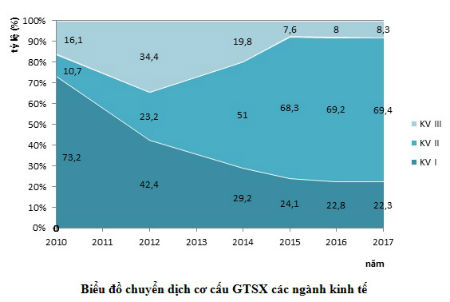1. Industry and
small-handicraft industries
Developing toward the
association with agriculture, formulating several small- and medium-sized
agro-processing establishments in association with material production and
business zones; There are now one flour mill and one alcohol making factory,
namely Thanh Tâm Cassava Processing Mill and Tung Lam Alcohol Factory.
In addition, Cuong Thuan IDICO
Company has invested in a quarry in Xuan Hoa Commune.
Small and handicraft industries
in the commune are mainly furniture and wood sculpture product manufacturing.
The commune has one wood workshop belonging to Ho Son Tu Trading & Services
Company which specializes in producing wooden furniture using modern technology.
However, labor force in the
industry - construction industry in the commune is not abundant, with only
nearly 1,600 people and the rest mainly works in the factories and companies in
neighboring communes. Therefore, the commune aims to attract more investors to
open businesses there to contribute to its economic development and create jobs
for the locals.
2. Agro-forestry and fishery
The agricultural production
value increases by 6.87 percent per year, of which the cultivation goes up 5.87
percent per year, and animal husbandry is up 12.68 percent per year. The total
area of three crops is about 4,540 hectares. Short-term crops include rice,
maize, sweet potato, bean, vegetables; especially sugarcane with a total area of
100 hectares per crop and cassava with a total area of
968 hectares per crop. The perennial trees have the total area of 1.334
hectares, the main crops including mango with 329 hectares, rubber with 705
hectares, and cashew with 192 hectares. In addition, there are several types of
trees that offer high economic value such as dragon fruit, citrus, and longan.
Livestock production accounts for more than 40 percent of the total agricultural
production value, with more than 800,000 cattle in total, including buffalo,
cow, pig, goat and poultry of different kinds. There are nine pig farms and two
chicken farms.
Forestry:
The total reforested area is 1,273.3 hectares, with annual production value at
over VND35 billion.
Aquaculture:
Most people in the commune utilize surface water of irrigation works and small
ponds while others transform ineffective cropland into freshwater fish ponds,
which are located in the area. Currently the area of aquaculture is 20
hectares, with annual production value is about VND9 billion.
3. Services, trade and
tourism
Commune's trade value annual
increase is expected to be over 10 percent, reaching over VND400 billion. Total
retail sales of goods and services in 2017 reached over VND900 billion,
production value at current prices is over VND85 billion. Trade and services
have been developed in association with the production of raw materials to make
use of local agricultural products, expand commodity markets, and meet the basic
needs of people's life.
There are 20 private
enterprises and nearly 600 individual business households in the whole commune.
The total labor force in the trade and service sector is over 1,500 people.
4. Education
The commune has four schools
including Xuan Hoa Kindergarten, Xuan Hoa Primary School, Hoa Hiep Primary
School, Xuan Hoa Secondary School.
The total number of teachers is
219, of which 78 are kindergarten teachers, 85 primary school teachers, and 56
secondary school teachers. The total number of classes is 91 with a total of
more than 2,700 students, including more than 800 kindergarten children, over
1000 primary pupils and more than 700 high school students.
In 2018, the commune has an
additional national standard-recognized school, bringing the total to four out
of four standardized schools. The teaching and learning activities have been
well implemented and the development of the learning family and the learning
community is well promoted.
5. Health
The commune’s Health Station
has sex beds, with an average of 4.33 hospital beds per ten thousand
inhabitants. There are 10 health workers, including one practitioner, with the
rate of 7.2 medical staff per ten thousand inhabitants and 0.7 doctors per ten
thousand inhabitants.
The station was newly built in
2017 and its facilities can sufficiently ensure health care for people.
Annually there are more than
13,000 medical examinations and treatments at the station, children are fully
vaccinated, modern contraceptives are applied, and natural population growth
rate remains below one percent. In addition, disease prevention is well
implemented, regularly organizes meetings, and applies propaganda measures to
prevent diseases and improve people’s health.
6. Culture
The commune has one Center for
Culture, Sports and Community Learning in Hamlet 3, four Cultural Houses in
hamlets and one Post Office. Basic cultural institutions can satisfy the
cultural needs of people. The center also has children playgrounds and a science
and technology information center to provide documentary and science and
technology films for rural people.
Cultural, performing and
sporting activities are organized regularly throughout the year on the occasion
of big holidays together with the movements by mass organizations.
Annually, the number of
households meeting the standards of cultured families reaches 98 percent or
more, four out of four hamlets are recognized cultured ones.
7. Graphs
and tables

|
Year
|
2010 |
2012 |
2014 |
2015 |
2016 |
2017 |
|
Production value |
842.572 |
987.050 |
1,312.428 |
1,534.205 |
1,800.280 |
1,972,036 |
Statistical
table of production value based on price comparison in 2010
From 2010 to 2017 -
Unit: Billion dong

|
Year
Sectors |
2005 |
2010 |
2014 |
2015 |
2016 |
2017 |
|
Sector
I |
73.2 |
42.4 |
29.2 |
24.1 |
22.8 |
22.3 |
|
Sector
II |
10.7 |
23.2 |
51.0 |
68.3 |
69.2 |
69.4 |
|
Sector
III |
16.1 |
34.4 |
19.8 |
7.6 |
8.0 |
8.3 |
The
proportion of economic sectors (2005-2017) -
Rate:
Percentage